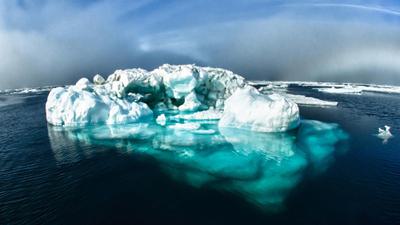The Arctic’s oldest and thickest ice is disappearing at a rate twice as fast as ice in the rest of the region, according to a new study published in the journal Geophysical Research Letters. The decline is being driven by warming ocean temperatures and sea ice loss throughout the Arctic, which scientists say is allowing wind and ocean currents to move ice around more easily, further hastening its decline.
Most ice in the Arctic is between one to four years old, according to the U.S. National Snow and Ice Data Center. But in pockets along northern Greenland and Canada, circulation patterns have historically caused ice to pile up and stay put for several years. As a result, sea ice in this part of the Arctic, known as the Last Ice Area, is typically more than five years old and can measure more than 13 feet thick.
But scientists from the University of Toronto and the University of Washington found that as ocean temperatures have increased, sea ice is thinner and covers an ever-smaller area in these regions. And as ice thins, winds and ocean currents are able to move it around more easily and quickly. Kent Moore, an atmospheric physicist at the University of Toronto and lead author of the new study, likens it to a traffic jam, with thinner, smaller pieces of ice along the margins of the sheltered pile-up points increasingly being carried out to the open ocean, followed by thicker, old ice from the center.
A visualization of the age of Arctic sea ice over time here
“We can’t treat the Last Ice Area as a monolithic area of ice which is going to last a long time,” Moore said in a statement. “There’s actually lots of regional variability.”
Climate models have long predicted this region of old ice in Northern Greenland and Canada to be the last to disappear in summer, providing a critical sanctuary for ice-dependent wildlife such as polar bears. The scientists argue their findings could help policymakers pinpoint exactly which areas will be the most stable and designate protected wildlife preserves. “Eventually the Last Ice Area will be the region that will repopulate the Arctic with wildlife,” Moore said. “If we lose all the ice, we lose those species. This area will be a refuge where species can survive and hopefully expand their regions once the ice starts returning.”


